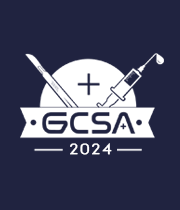Title : Effects of different approaches of lidocaine on decannulation cough and postoperative pain in patients undergoing gastrectomy
Abstract:
Background and Purpose:
Intravenous lidocaine (IVL) used intravenously for suppression of extubation choking is different from that used as an adjunct to postoperative analgesia. This study was to investigate the effect of single intravenous lidocaine infusion (SIL) or continuous intravenous lidocaine infusion (IVLI) on the choking response to extubation and the postoperative pain reduction in patients undergoing gastrectomy under general anesthesia.
Methods:
A total of 60 patients undergoing elective gastrectomy under general anesthesia were enrolled in this study. The patients were randomly divided into three groups: Group C (n=20): no special treatment; Group S (n=20): SIL 1.5 mg / kg was slowly administered 5 minutes after the end of surgery; Group P (n=20): a loading dose of lidocaine 1.5mg/kg was slowly injected intravenously before anesthesia induction, and IVLI 1.5 mg·kg-1·h-1 was given 10 minutes later until the end of surgery. All patients received intravenous inhalation combined with maintenance anesthesia, patient-controlled intravenous analgesia (PCIA), and were monitored routinely. The heart rate (HR), pulse oxygen saturation (SpO2), and non-invasive blood pressure (NIBP) of the 3 groups were recorded at 3 minutes after admission (T0), right after intubation (T1), right after extubation (T2), 6 hours after extubation (T3). The primary outcomes were the grade of cough during extubation and the numerical rating scale (NRS) of pain at 10 minutes, 30 minutes and T3 after extubation. The secondary outcomes included HR and mean arterial pressure (MAP) from T0 to T3, intraoperative remifentanil dosage and pumping rate, the frequency of remedial compression of the PCIA pump at 6 hours after extubation, and the 40-item Quality of Recovery Scale (QORS) at 24 hours and 48 hours after surgery. In addition, time to extubation, Ramsay sedation score at awakening, and adverse events at extubation such as sore throat, breath-holding, laryngospasm, and incisional lacrimation, time to first exhaustion, and symptoms related to toxic reaction to lidocaine were recorded.
Results:
There was a statistical difference in the composition ratio of choking grade at extubation when comparing between the 3 groups (P<0.05). The incidence of choking cough during extubation was lower in group P and group S compared with group C (all P values<0.05). The MAP and HR of group P were significantly lower than those of group C and group S at the moments of T1 and T3 (all P values <0.05); and the MAP and HR of group S and group P were significantly lower than those of group C at the moment of T2. The NRS scores were higher in group C compared with those of group S and group P, and the differences were statistically significant (P<0.05). NRS scores were higher, and the difference was statistically significant (P<0.05). There was no significant difference in remifentanil dosage among the 3 groups, but remifentanil pumping speed was slower in group P compared with group C (P<0.05). As for the 48-hour postoperative QoR-40 score and the rate of patients who did not need remedial compression of the PCIA pump within 6 hours after extubation, group P was higher than group C, and there was a statistically significant difference (P<0.05). There was no statistically significant difference in the 48-hour postoperative QoR-40 scores among the three groups (P>0.05). There was no significant difference in the time to extubation, the time to first ventilations, and Ramsay sedation scores at the time of awakening (P>0.05). There was no statistical difference between the three groups in terms of extubation time, first postoperative expiration time and Ramsay sedation score at awakening (P>0.05). There was no difference in the incidence of sore throat, breath-holding, laryngospasm, and incision cracking at the time of extubation (P>0.05).
Conclusion:
IVL can effectively reduce the extubation choking grade at the time of awakening in patients undergoing colorectal cancer surgery under general anesthesia, and reduce the hemodynamic fluctuation at the time of extubation. IVL can reduce the incidence of pain score and remedial analgesia in the early post-extubation period, and IVLI has the same effect as SIL in suppressing extubation choking. In addition to the same effect of suppressing extubation choking, IVLI significantly reduced the intraoperative opioid pumping rate and improved the quality of postoperative recovery, but should be alert to the symptoms of local anesthetic toxicity. IVL did not significantly affect the time to extubation, time to first postoperative expiration, or the Ramsay sedation score at awakening.
Keywords:approaches,lidocaine,decannulation cough,postoperative pain , gastrectomy



